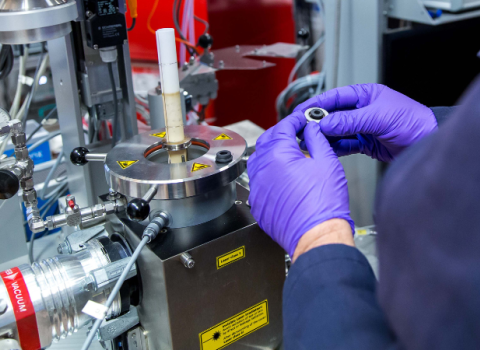Delays in European legislation relating to green hydrogen have led energy companies to hold back research projects here and look to the US, where the Inflation Reduction Act is providing massive incentives

Talks on promoting green hydrogen through the Renewable Energy Directive were cancelled on Tuesday 7 February, with MEP Markus Pieper claiming the European Commission had failed to send important information about how much extra renewable energy is needed to produce green hydrogen via electrolysis, in order not to reduce the amount of renewable electricity currently entering electricity grids.
The rules on so-called 'additionality’ were due in December 2021, but the Commission failed to deliver. Interference from member states, especially Germany and France, has been blamed for the continuing delays.
The hydrogen industry is waiting for clarification on these points as well as whether renewable hydrogen or ‘Renewable Fuels of Non Biological Origin’ will be linked to the EU’s targets. The lack of direction from the EU has left researchers unsure of where to focus their efforts.
“It is a major obstacle that the definitions of renewable hydrogen and low-carbon hydrogen are not yet clear,” says Anna Wallentin of Energigas Sverige, a Swedish energy company that is working with Luleå University of Technology’s Centre for Hydrogen Energy Systems Sweden on hydrogen research projects.
“In order to be able to conduct research on how the market and production for renewable or low-carbon hydrogen should increase, [the EU] must first [define] what these concepts mean and what the methods of fulfilment and reporting should look like,” she says.
“The EU green power criteria have been overdue for more than a year,” agrees Olaf Winter, spokesman for German energy giant RWE, which is involved in 30 projects on production, transmission, storage, import and application of hydrogen on an industrial scale. “Without clarity on this point no planning is possible.”
The delays in regulation will have a knock-on effect on how fast green hydrogen production can progress in Europe. In a letter to EU leaders in October 2022, the hydrogen industry warned that urgent increase in renewable electricity is needed to power green hydrogen in line with the EU’s green ambitions.
As it stands, hydrogen represents a modest fraction of the global and EU energy mix, and is still largely produced from fossil fuels, notably from natural gas or from coal, resulting in the release of 70 to 100 million tonnes CO2 annually in the EU.
The EU’s decarbonisation ambitions would favour green hydrogen – or hydrogen produced from renewable energy, completely carbon-free – as an end-goal, but it’s widely accepted that blue hydrogen will be a stepping stone on the way to a green hydrogen energy system.
Unlike green hydrogen, the energy needed to produce blue hydrogen comes from fossil fuels, but then carbon capture and storage will cut emissions.
However, blue hydrogen comes with a suite of problems – it often runs on the highly potent greenhouse gas methane, which can leak from carbon capture facilities. One study suggests that blue hydrogen may in fact be 20% worse than just using natural gas.
“Blue hydrogen is largely failing and largely unproven,” says Gareth Dale, reader in political economy at Brunel University London. According to Dale, the blue hydrogen route should be scrapped altogether by the EU, with the focus on developing a truly renewable green hydrogen economy instead.
Green hydrogen accounts for 0.04% of the global hydrogen mix, but even all of that is not 100% carbon-free, says Dale.
“There's a common tendency to define green hydrogen as any hydrogen produced by electrolysis, but that's not really green hydrogen,” he says.
“If you have a 100% coal powered grid and someone builds a wind farm and produces green hydrogen rather than sending the power to the grid to reduce some of that coal burning, that's not green at all.” This is where the rules on additionality come into play, and hydrogen researchers need to know exactly how green the Commission expects them to be.
In terms of global hydrogen research trends, a recent report by the European Patent Organisation shows that Europe and Japan remain world leaders in hydrogen innovation according to technology patents - hydrogen patenting grew even faster in Japan than in Europe during the past decade, with compound average growth rates of 6.2% and 4.5% respectively between 2011 and 2020. But that success may be short-lived in light of the new US Inflation Reduction Act.
The Act gives clean hydrogen plants tax credits for the first 10 years of operation, but these tax breaks are only in place until 2032, meaning that the sooner companies apply for the scheme, the better. This adds an element of time pressure which may entice European companies to ditch their European R&I efforts as these delays continue and set up shop on the other side of the Atlantic instead.
“There is a clear risk that the IRA will attract European green companies to the USA,” says Wallentin. RWE also says that the new IRA opens up attractive opportunities for them, but that this will not be at the expense of their European projects.





 A unique international forum for public research organisations and companies to connect their external engagement with strategic interests around their R&D system.
A unique international forum for public research organisations and companies to connect their external engagement with strategic interests around their R&D system.